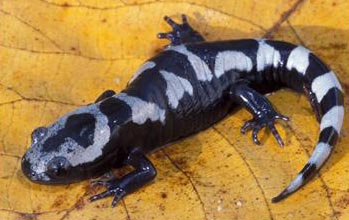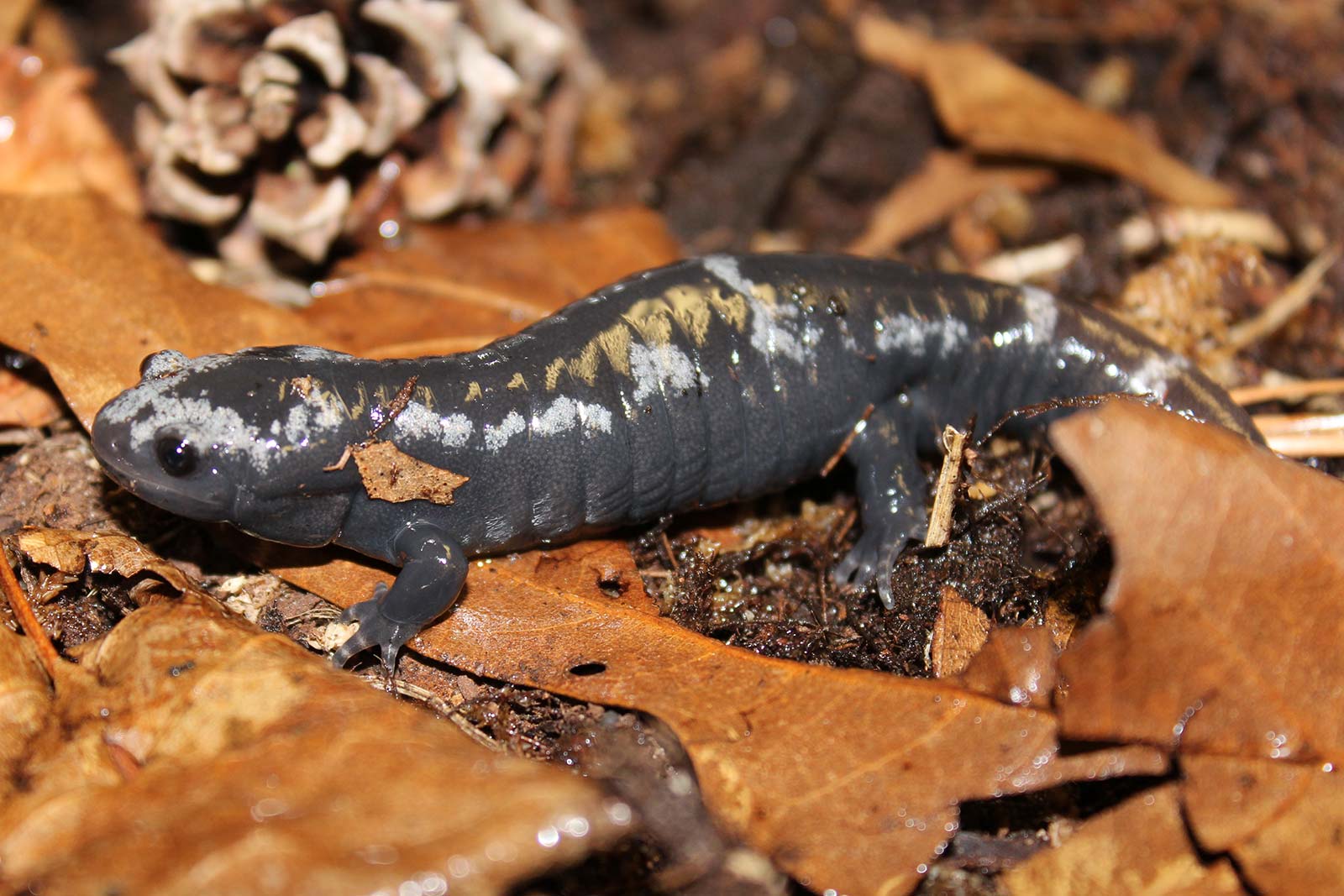Marbled salamander the marbled salamander ambystoma opacum is one of the smaller species averaging at about 3 to 5 inches or 7 to 12 centimeters in length.
What animals eat marbled salamanders.
Marbled salamander larvae are also active predators and may be the dominant predators in their temporary ponds.
There the animal begins to court and mate.
The marbled salamander lives in forests and woodlands.
Marbled salamanders enjoy dark places during the day under leaves in a burrow or under logs and barks.
A female marbled salamander guarding her clutch of eggs within a dry portion of a mendon swamp.
Each female lays her clutch of 30 to 100 eggs in a dry depression and the embryos begin to develop.
The bands of females tend to be gray while those of males are more white.
It is found in a variety of habitats from moist sandy areas to dry hillsides.
The larvae of the marbled salamander are also quite voracious predators eating zooplankton upon hatching but adding more prey as they grow including aquatic insects isopods fairy shrimp snails worms and the larvae of other amphibians.
It spends most of its time in a burrow in leaf litter or under bark or a log.
They move quickly are often willing to get close to cats humans and other animals and can provide quite the game of cat and mouse well cat and salamander.
Adult marbled salamanders eat invertebrates including earthworms slugs snails centipedes and a variety of insects.
They eat zooplankton mainly copepods and cladocerans when they first hatch but add other prey to their diet as they grow including larger crustaceans isopods fairy shrimp aquatic insects snails oligochaete worms and the larvae of amphibians sometimes even other marbled salamanders.
It migrates to a pond before autumn rains begin.
Most small creatures and this includes salamanders are the perfect prey targets for cats.
The marbled salamander is a stocky boldly banded salamander.
Although other salamander species in the mole salamander family breed in water the marbled salamander does not.
What does a marbled salamander eat.
Adults can grow to about 11 cm 4 in small compared to other members of its genus.
These can either be a mixture of grey or white patterns along a black undertone.
Like most of the mole salamanders it is secretive spending most of its life under logs or in burrows.
They will not eat dead prey.
The marbled salamander is attracted to their movement and smell.
So i always enjoy seeing a salamander scurrying across the floor as does my cat.
Marbled salamanders only eat live prey.
They eat zooplankton mainly copepods and cladocerans when they first hatch but add other prey to their diet as they grow including larger crustaceans isopods fairy shrimp aquatic insects snails oligochaete worms and the.




















